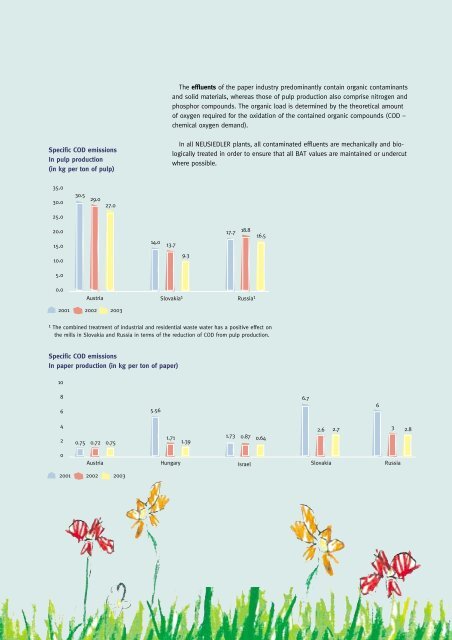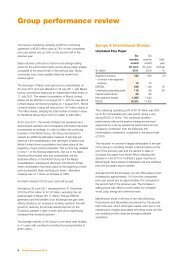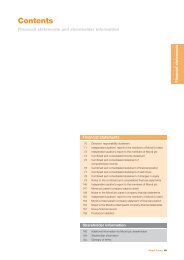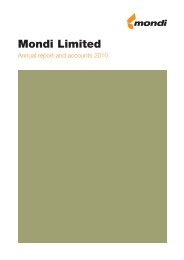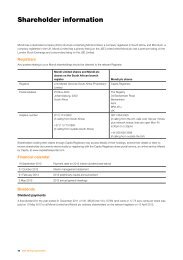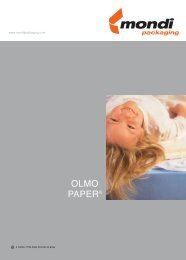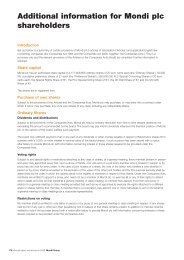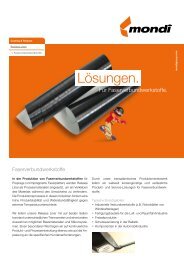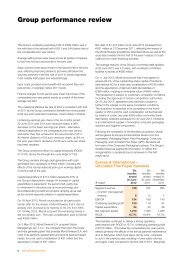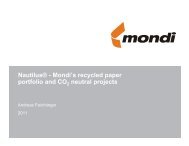for sustained success - Mondi
for sustained success - Mondi
for sustained success - Mondi
You also want an ePaper? Increase the reach of your titles
YUMPU automatically turns print PDFs into web optimized ePapers that Google loves.
Specific COD emissions<br />
In pulp production<br />
(in kg per ton of pulp)<br />
35.0<br />
30.0<br />
25.0<br />
20.0<br />
15.0<br />
10.0<br />
5.0<br />
0.0<br />
10<br />
8<br />
6<br />
4<br />
2<br />
0<br />
30.5 29.0<br />
Austria<br />
0.75 0.72 0.75<br />
Austria<br />
27.0<br />
2001 2002 2003<br />
Specific COD emissions<br />
In paper production (in kg per ton of paper)<br />
2001 2002 2003<br />
14.0 13.7<br />
5.56<br />
Hungary<br />
The effluents of the paper industry predominantly contain organic contaminants<br />
and solid materials, whereas those of pulp production also comprise nitrogen and<br />
phosphor compounds. The organic load is determined by the theoretical amount<br />
of oxygen required <strong>for</strong> the oxidation of the contained organic compounds (COD –<br />
chemical oxygen demand).<br />
In all NEUSIEDLER plants, all contaminated effluents are mechanically and biologically<br />
treated in order to ensure that all BAT values are maintained or undercut<br />
where possible.<br />
Slovakia 1<br />
1.71<br />
9.3<br />
1.39<br />
17.7 18.8 16.5<br />
Russia 1<br />
1 The combined treatment of industrial and residential waste water has a positive effect on<br />
the mills in Slovakia and Russia in terms of the reduction of COD from pulp production.<br />
1.73 0.87<br />
Israel<br />
0.64<br />
6.7<br />
2.6<br />
Slovakia<br />
2.7<br />
6<br />
3<br />
Russia<br />
2.8


